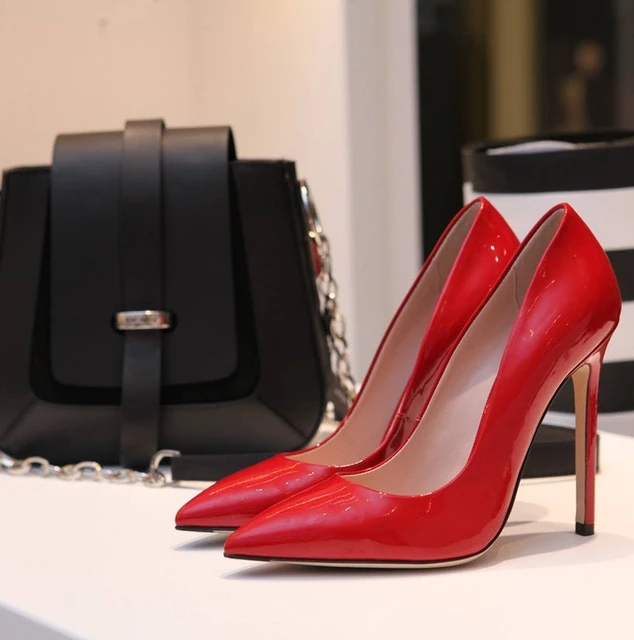Despite many businesses moving online, the traditional brick-and-mortar store will still be the favorite with customers. Nothing is better than picking out something, touching it, paying for it, and taking it home immediately. That is one experience that is missing from online purchases.
So, if you want to open a boutique store, perhaps opening a retail store is the best option. You can always add an online store once your traditional store is up and running.
A boutique store can sell clothing, accessories, shoes, jewelry, books, and millions of other things you can think of.
So, before you jump into your store design, brainstorm ideas of what you will sell in your store. Choosing a well-defined niche and focusing on providing a personalized customer experience will help you differentiate your store from others. You can provide a unique experience that no one else can copy.
Examples of niches can be found everywhere. A niche defines the type of products you will sell and the type of customers you will serve. Perhaps you want to sell ethically produced women’s fashion or concentrate on selling vintage clothing. A boutique store can also sell things other than clothing. For instance, how about selling toys and children’s books if your target market is children? You can also add other services to your store, like having events that promote what you sell by having children’s book authors host a story-reading morning. The kids could gather at your store and listen to a story read by the person who wrote the book. Of course, this is only an example. Your boutique store could sell anything you are passionate about and express your ideas and interests.
So, before you open your store, to help you pinpoint your ideas and create an actionable plan you can follow, here is a retail store checklist to help you efficiently manage the process of planning and opening your store.
Find the Right Property

You figured out your niche and what you want to sell in your store. You also thought about who and where your target audience is. The next step on the retail store checklist is finding suitable premises to open your boutique.
You will need to follow state and local laws and regulations regarding where you can open a store. Getting specific business, health, building, and safety permits would be best. For specific details, you may need to contact your local municipality to find out how to obtain those.
You likely won’t be able to open a boutique store in a residential area. You will need to look at the available commercial property for sale. Owning your business premises is the best way, but if you cannot afford to buy a commercial property, you will need to consider renting.
Keep in mind that no property will be move-in ready for you when you first find it, and you will need to remodel and renovate it to your requirements.
The main consideration of the property is its location. You will need to make it easy for your customers to find you, so try to find something with a fair amount of foot traffic. That way, you will be able to attract passers-by into your store. It is important, especially when you are just starting out because once you are established, you will be able to depend on customers returning to your store and spreading the word about your great store.
Remodel Your Space
Once your premises are secured, you must remodel your space. Your customers’ first impressions are critical. It will make the difference between them stepping into your store or walking on by. Your color scheme for your storefront, logo, and window display must tell customers what your store is about and invite them to come in. So, the next step on our retail store checklist is to establish your store’s business name, logo, signage, and décor.
You must renovate the interior to make your décor fit for receiving customers. Hiring a commercial building contractor is the best way to deal with that. Their professional expertise will help you tackle the necessary renovations efficiently. Once you start demolishing the old fixtures, you may have to find local dumpster rentals to hire a skip to ensure your building waste is neatly and securely disposed of.
Update Your Bathrooms

This is one step on the opening retail store checklist that most business owners do not pay much attention to. Still, having safe and welcoming ablution facilities in your store is important. Unless your boutique store is located within a mall, you will need to provide bathroom facilities for your staff and even customers.
Having a well-appointed bathroom can be an asset. For one, your staff will appreciate having clean and neat facilities. Another great point about having a bathroom facility in your store is that if your customers are mostly women, they will appreciate having a bathroom right in the store. Many women suffer incontinence, especially when they get older, and will appreciate a store where they can also use the bathroom. Also, pregnant women may find it very convenient to have a toilet break when shopping.
That bathroom may even mean that your customers will spend more time in your store and buy more when they are comfortable and not trying to finish their purchases quickly so that they can find a bathroom when needed.
Ensure that registered plumbers have expertly fitted all the plumbing fixtures to make sure everything works well.
Install a New Floor
A floor can make or break how your boutique appears to prospective customers. It is the first thing they see as they pass your store. That is why it’s important to include the decisions about what flooring to install in your retail store checklist.
The most important thing about flooring material is that it needs to be durable. It has to withstand a multitude of heels walking over it every day. A scratched-up floor is off-putting to customers, making the whole space feel neglected and unkempt.
Installing an epoxy floor is one of the best ways to ensure that your floor always looks its best. It is a great option for a commercial space because it’s very durable, inexpensive, and comes in a variety of colors. It will be very easy to match the color of your floor to complement the rest of your shop.
Another positive point about the epoxy floor is that it is very easy to keep clean. A sweep and quick mop at the end of the day will wash away all the grime accumulated during shopping hours. Your floor will be clean and gleaming, ready to welcome your customers again tomorrow.
Keep Your Space Spotless
Once you have completed your renovations, you must ensure your shop is as clean as possible. People feel good when they spend time in clean places. If your shop is always neat and tidy, passing customers are more likely to stop and visit. A layer of dust on display shelves can turn away possible sales.
As a new business owner, you may feel stretched looking after everything in your store, so cleaning your shop can be one thing that you outsource. Many companies want to look after people like you who need cleaning but have no time to do it. Look up your local office cleaning services to help you clean your shop.
If you have bathroom facilities in your shop, especially if you allow your customers to use them, consider hiring janitorial company services to keep your bathroom facilities spotless.
Get the Tech You Need

If you are opening a retail boutique, you will need to include purchasing a suite of innovative digital technologies on your retail store checklist that will make the running of your store easier. You need to make sure your business is prepared for the future. The technology is designed to streamline aspects of the shopping experience. It includes everything from simple point-of-sale systems all the way to complex AI automation software.
For instance, you may want to introduce holographic product displays that change as customers browse through your store. Or you may want to install AI-powered chatbots in the store to provide instant customer support, answer customer questions, and offer customer service. The new digital helpers will likely improve customer satisfaction with your store and enhance their experience.
One thing that you should definitely invest in is an intrinsically safe tablet to make sure your equipment is durable and will last a long time.
Add Safety Features

Safety may be the last thing on your mind as a new boutique store owner, which is why it is included on our list. Your shop premises can become unsafe for you or your customers in many ways, so you need to pay attention to safety.
Make sure that there is no tripping hazard anywhere in the store. Keep your stock room tidy at all times. Make sure you are prepared to put out any fires that may occur. You may not realize it, but a fire can easily occur in a retail store. There may be an exposed wire somewhere, improper chemical storage, or combustible materials left too close to a heat source, which can easily start a fire that will be a danger to you, your staff, and your customers.
Make sure your store is equipped with a sprinkler system. It may require a financial outlay at the beginning, but it is necessary to have one for your own safety and the safety of your customers. If you do have a sprinkler system installed, make sure certified professionals do all your fire line repairs.
Assemble Your Inventory
The last item on our retail store checklist is the most fun. Once your store is renovated and ready for business, you need to buy all the stock to fill it. Buying stock is not as easy as it seems. You must consider the type of customer you want to sell to and their buying habits. By understanding your customer’s preferences, you can make better decisions as to what stock and how much to buy.
Your ability to manage your stock levels effectively can mean the difference between making tons of profit or a loss. Inventory costs money, and usually, you must pay upfront. Once the item is sold, you will get your money back and then some, meaning you made a profit. So, you will need to know your numbers to make sure you don’t end up with too much inventory that takes up most of your working capital.
When ordering inventory, you must always have a plan. If you see that certain items are not selling, do not order any more of them.
It would be best if you also considered your customer’s needs when deciding what items to stock in your boutique. If you are going to sell antique furniture, you may have some customers who will be unable to get the bought piece of furniture home. If you don’t offer delivery service, you may lose that sale.
Some types of goods are easier to sell than others. For example, if you are selling children’s toys, they can stay unsold for quite a long time, but if you are selling perishable goods, you will need to sell most of your stock before the items go bad. If you don’t, you may have to waste the unsold items, losing all the money you paid for them.
You must also remember that certain items like gold and diamond trades are regulated; you must find out all the regulations that need to be followed to legally stock gold and diamonds. You will also need to vet the diamond buyers you deal with to avoid breaking the law.
Starting a retail boutique is not an easy task. It requires a lot of planning and commitment from you. However, it will be worth it at the end when you can see your store taking shape and opening for business. Having people come into your store and leave happy is the best feeling in the world.







